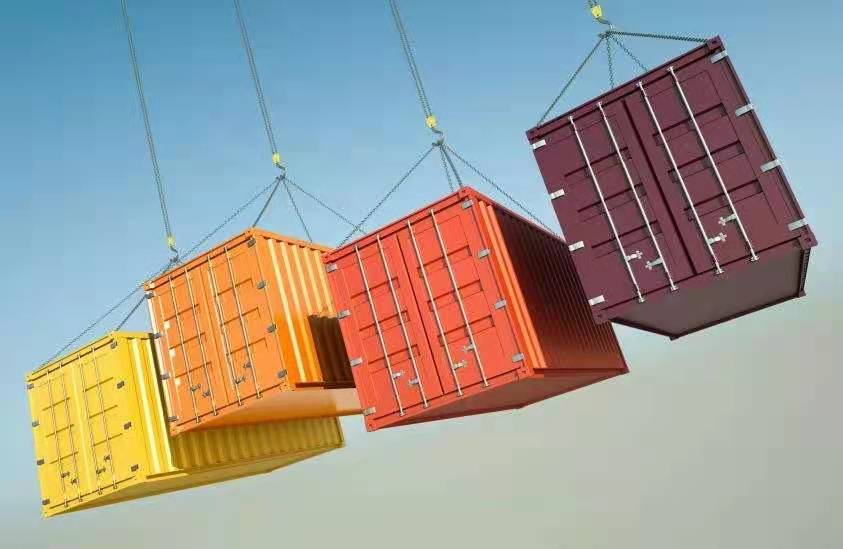Global logistics supply chain resource integrator
Global logistics supply chain resource integrator
Recently, Qingdao Port Automated Container Terminals successfully completed the control operation of an automated quay crane based on a 5G connection, enabling the capture and transport of containers via wireless networks, the world's first 5g long-distance Crane operation in the actual production environment has been completed. What impact will the coming of the 5G era have on the shipping industry?

5G is just faster? Of course not. There was a popular joke on the Internet: We used to watch pandas in the 2G era; we used to watch jpg in the 3G era; we used to watch Avi in the 4G era; we used to watch "real" pandas in the 5G era. 5g is no longer far away, or even close. In June 2018, the 5G stand-alone network standard was frozen, and 5G completed the first phase of the full-function eMBB standardization work; on 6 December, China's three major operators obtained a nationwide 5g pilot frequency license in the medium and low frequency bands; on 10 January 2019, ministry of Industry and Information Technology announced the issuance of 5G temporary license, pulled open China's 5g commercial network construction curtain. From the Telegraph, telephone to mobile phone, from 1G to 4G, communication technology has brought endless convenience and welfare to human and society. We are now entering the era of 5G. What is 5G? The advantage of 5G is that it has three application scenarios: Enhanced Mobile Broadband, ultra reliable low delay and massive machine communication. In other words, 5g can bring users higher bandwidth rate, lower and more reliable delay and larger capacity network connection. Overall, 5G has the following characteristics: high speed, ubiquitous network, low power consumption, low delay, more secure. The enhanced mobile broadband scenario for 5G means faster internet speeds, which in theory could be 100 times faster than 4G or more, with future 5G networks peaking at 20Gb per second. Of course, it will take mobile phones, computers, storage devices and so on to support this speed, and it will take some time to achieve. Ubiquitous network refers to the existence of the network in every corner of social life. Do we really need this? The answer is yes. Underground Garages, for example. It's a smart car, it's out there all day, it goes home at night to recharge, it has to park itself in a parking space in an underground garage, plug itself in, how can it find its own space, how can it plug itself in if it doesn't have internet? This needs the network to want to spread in the social life each corner.

Low power consumption. It's painful to wear a smartwatch now, because you have to charge it every day. The only way we can reduce the pain is to use less energy. The belt, for example, is connected to the Internet, so it keeps track of my waistline, my body movements, whether I've gained weight or lost weight recently. My glasses should also be connected to the Internet. They can record my tear ducts and many things I see. If all of these things are going to be smart and connected to the Internet, you're going to have to reduce your power consumption by up to once a month. Low Latency is one of the most important features of 5G. How does the sound of our voice usually carry? The speech vibrates the air, and the two pass it on to each other for 140 milliseconds. Humans can tolerate 140 milliseconds, and we don't think there's much time lag. But if you control a drone or control a car, give the car a signal to say brake, the car needs 140 milliseconds to react, then you have run 200 meters, if you have run 20 milliseconds, you have run more than 10 meters, this kind of thing is not going to make driverless cars a reality. So to solve the problem of time delay is the core problem in the communication system. At the same time, the widespread deployment of 5G low latency native platforms will catalyze innovation and change in the Internet of things. It’s safer. 5G network adopts enhanced encryption algorithm, and has the ability of integration of access and authentication. The 5G network ensures that only certified devices can be connected to the network, and the network automation security specifications and intrusion prevention functions are further popularized and increased. Thus, to ensure the safe and normal operation of enterprise business, large-scale safety specification automation can not only help to manage a large number of devices, but also to ensure the safety of these devices throughout their life cycle. In a word, 5G is a revolution, it is driven by technology, from the connection between people to everything, from individuals and families to all areas of society, and then to social, economic and life to bring revolutionary impact. The combination of 5G technology and traditional shipping industry is bound to bring great changes to the industry. Xu Kai, director of the Shanghai International Shipping Center's Big Data Center, said: First of all, 5G technology's high-speed, low-latency characteristics play a significant role in the shipping industry. For example, under the integrated conditions of ship and shore, remote driving, intelligent engine room monitoring, transparent monitoring of cargo transportation, as well as automatic dock vehicle AGV, crane remote control, monitoring screen identification, etc. , there is a need for high-rate communication, and the delay means that the actual behavior is out of line with the expected behavior. Therefore, the low delay of 5G will bring more time-effectiveness, higher failure probability and higher control precision than before to data acquisition, remote control, artificial intelligence and equipment coordination. Secondly, the 5G communication network can support more terminal nodes, and more physical device nodes can be added to a huge number of wireless networks, which can solve the problem of concurrent collection of large-scale data collection points, the scale of data collection can also be a step up. This means that an entire port or large ship could build a ubiquitous internet of things based on 5G technology, where all equipment, cargo, people, pipelines, etc. Can communicate with each other. Again, 5g is an effective supplement and alternative to satellite communications. As 5g base stations can be easily constructed between the self-organizing Communication Network, as long as a part of the world's international shipping merchant adds 5G base stations, it is possible to form a Marine 5G network for relay transmission between ships to provide broadband communications. Ships at sea, no matter how intelligent development, all means that in the future our ships will have to collect more data, to send back more data, 5G is not a backup plan for communications when the circuit is broken, but can make communications relatively low cost of information, so it has a certain practical significance. Lin Shulai, chief technology officer of shipping giant one hundred million ocean blue, said 5G applications should initially be in areas such as mobile communications that require high speed transmission, such as unmanned driving and virtual reality. The effect on shipping will be a direct grafting of some applications. That is to say, many other areas of application of innovation, and then affect shipping, or grafting to shipping, such as ship technology, commercial forms and other aspects of change. Hu Keyi, chief engineer and director of the technical center of Jiangnan Shipbuilding (Group) Co. , Ltd. , put it bluntly: to build a single data source, an electronic model, which is the basis of an unmanned intelligent ship, and control requires communication, 5g can greatly improve the response time. It can be said that the advent of 5G will accelerate the advent of the era of intelligent ships.

One wild guess about the future of 5G in shipping: With the development of 5G technology, there will be a base station on each ship for autonomous networking between ships, which means that ships and ships are like relays, in order to achieve 5G in the maritime network coverage. Xu believes that ships at sea do not sail at random, most of them take relatively fixed routes, and there must be another ship within this range at intervals of about 50 or 100 nautical miles. The addition of a 5G base station on each ship for ship-to-ship connectivity may also provide a back-up communication link. Take, for example, the merchant ship, which has nearly 300 VLCC and VLOC ships, which sail from South America to China, Australia to China, and the Middle East to China. If a 5G base station were installed on every ship, it would no longer have to pay as much for expensive satellite communications services as it does now, and it would be possible to achieve very low cost maritime communications through ship to ship connections, and it's broadband, so it's very cost-effective. Possibility two: 5G technology may help maritime regulation. There are several aspects involved in this maritime supervision. First, our current global emissions control period, including China's, will continue until 2022. With the full implementation of the low-sulfur oil limit, 0.1% of the low-sulfur oil will still be achieved by boarding ships for spot checks, but in the future with 5G technology, you can directly through the data back to detect the way the ship's oil and emissions. The second is to strengthen the supervision of the crew on board. Because the principle and technology of 5G network is different from that of 3G and 4G, it may do better in some other auxiliary work of locating the base station, which would make it easier for us to track the presence or absence of a crew member on this ship. At the same time, in the future, every ship will be equipped with 5G network, so that every ship can realize stable ship-to-shore communication, and send all the information of more ships back to shore. What happens on the ship in the future may be known from the shore. The application of communication technology in the field of ships has been relatively advanced. Early on, the Telegraph was invented, and it was used on ships. Then came radio broadcasting, and radio broadcasting was first used on ships. From this point of view, the ship in the application of communication technology is often ahead of other industries. As Xu said, for the new technology, even the traditional shipping industry can not only hold a follower's mentality, must have a positive attitude to approach advanced experience, bold try, surprise may be just ahead.

关注伊布拉欣,
了解国际货运第一手
最新行业动态。









Ibrahim international freight and import customs brokerage service related information, with an updated international logistics perspective, let you know about the news of international trade and freight forwarding.

2021-01-25